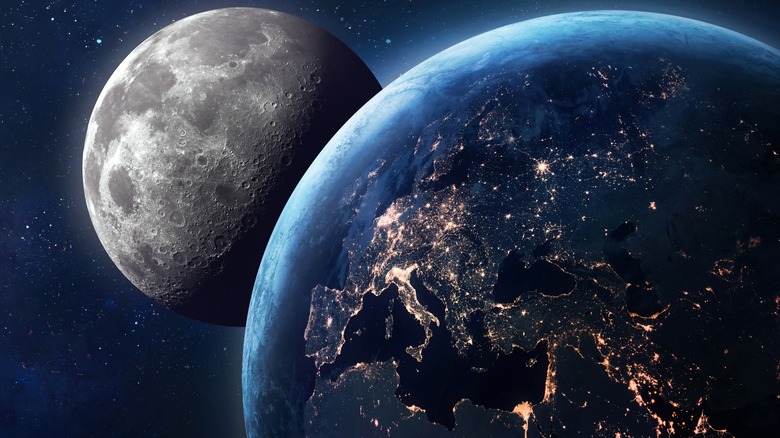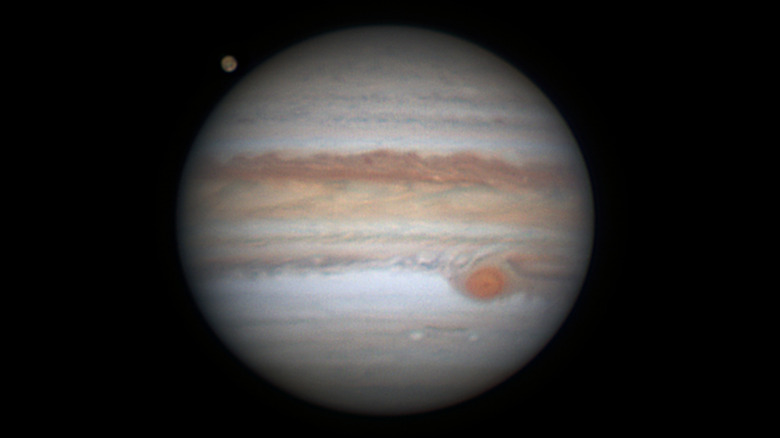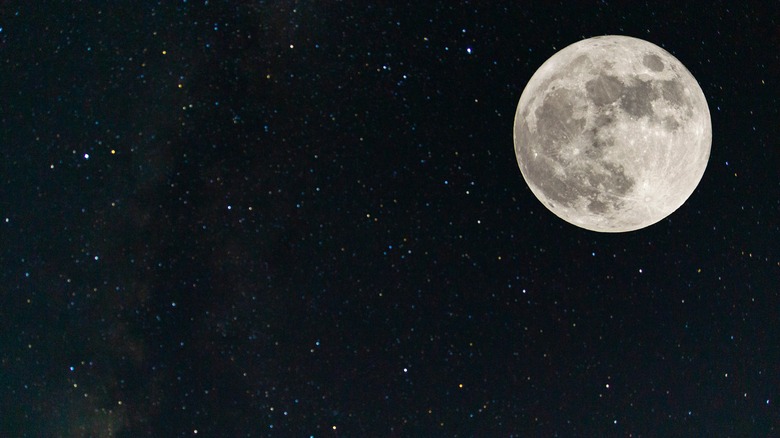The Size Of These Countries Will Make You Rethink How You See The Moon
There's something truly awe-inspiring about the moon. In part, it's the sheer accessibility of it. Oftentimes, the field of astronomy focuses on theoreticals, or objects that are so far away as to be mind-boggling and unimaginable for non-experts. Take the closest star to the solar system, for instance. Proxima Centauri, per Space.com, is an absurd 4.24 light years from us. This works out, according to the outlet, to around 25 trillion miles (or about 40 trillion kilometers).
The moon, meanwhile, is a much closer celestial friend. A bright and beautiful sight in the night sky (depending on time of the year, location, and so on) and a tediously popular target for photographers everywhere, the moon is only 225,623 miles (about 362,000 kilometers) away at the closest point in its journey, per NASA. Yes, this is still a tremendous distance by our standards, but our closest celestial neighbor looks as though it could be on our very doorstep when at its brightest and fullest. By space standards, it certainly is.
A full moon, on a clear night, can look absolutely huge. It's difficult to get a fix on just how large it is, though. Compared to certain countries right here on Earth, it may actually be smaller than you might think.
Jupiter's gigantic Ganymede
As NASA reports, our solar system is full of moons. The two planets closest to the sun, Mercury and Venus, don't have any. Meanwhile, both Jupiter and Saturn have a huge amount: a total of 80 and 83 moons, respectively — some of which are yet to be confirmed and named. Moons, NASA states, are also known as "natural satellites," because that's exactly what they are: objects that become close companions of larger bodies and proceed to orbit them.
NASA adds that Jupiter's Ganymede is the solar system's mightiest moon, 1,635 miles (2,631 kilometers) in radius. Per Britannica, Mercury's radius is approximately 1,516 miles (2,440 kilometers), demonstrating just how large Ganymede is. NASA goes on to explain that Ganymede has the proud distinction of having been discovered by the legendary Galileo Galilei himself. In 2014, per the California Institute of Technology, JPL/NASA studies suggested that Ganymede "might have ice and oceans stacked up in several layers like a club sandwich."
Our own moon doesn't have a neat name or a mysterious icy sandwich of a makeup. It isn't mind-bogglingly vast, either. In fact, it could be considered disappointingly small. As the Natural History Museum reports, the moon has a radius of about 1,079 miles (1,737 kilometers). Compare this with Pluto's radius of 715 miles (1,151 kilometers), per NASA. With Pluto being so teeny as to have its official designation as planet stripped from it, the dwarf planet isn't the most impressive bar to leap over.
The moon is both large and small
Space.com states that the moon's total surface area is 14.6 million square miles (38 million square kilometers). As Worldometer reports, Russia is the largest country on the planet, with a total land area of around 6.6 million square miles (17 million square kilometers), per the CIA's The World Factbook. The moon gets one over on Canada, too, which The World Factbook states to be around 3.8 million square miles (9.9 million square kilometers) in total area. China, slightly smaller than the Great White North, is around 3.7 million square miles (9.5 million square kilometers), per The World Factbook. The moon is bigger than the smallest (dwarf) planet in the solar system and our largest country, then, but the biggest continent on Earth — Asia — bests the moon with a total area of about 17.2 million square miles (44.6 million square kilometers), reports Britannica.
Elsewhere in the solar system, there are moons far smaller than our own. Perhaps the most famous example is Mars' curious Deimos. This moon, per NASA, has a diameter of just 7.5 miles (around 12.1 kilometers). It's also a strange irregular potato shape. Ultimately, the question of whether our moon is small or not is very relative. It's our closest companion in space, though, and we love it just the way it is.


